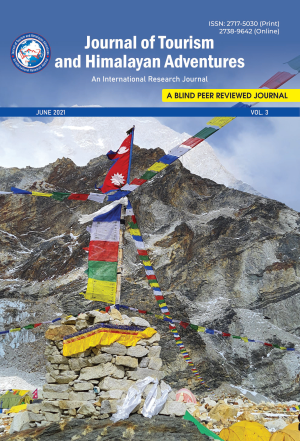Ecological Restoration in Gautam Buddha's Birthplace Lumbini
DOI:
https://doi.org/10.3126/jtha.v3i1.39113Keywords:
Lumbini, restoration, heritage, biodiversity, ecosystem, conservationAbstract
The historical information about natural vegetation of Lumbini is not clearly known. Modern day human colonization around Mayadevi temple could have been intensified after Khadga Samsher's visit to Lumbini in 1896, followed by the eradication of Malaria in the Tarai of Nepal around the 1950s. The dense human settlements around the Mayadevi temple (place where Buddha was born) was gradually shifted outside the area of Lumbini Development Trust (LDT) (16 x 4 km2 area), and the area was planted with a huge number of plant species. Hence, the forest within LDT is essentially a secondary forest without a scientific method of forest management (only plantation), as a result some species were not able to get naturally established and disappeared gradually. Studies indicated that there were around 354 species of plants species in LDT (Siwakoti, 2008) however, a recent vegetation survey (Tiwari, 1919) recorded only about 250 species including 39 tree species and other herbs and shrubs (the data is being produced, and needs second round survey to confirm). Some very common plant species have not been found from the region, indicating the heavy anthropogenic pressure including construction activities, grazing, fire, and plantation of trees without knowing microhabitat have taken the toll, and also by the encroachment of alien and invasive plant species both in terrestrial and aquatic environment. It is quite important to update the biodiversity, study regeneration of plant and animal species and management of invasive species in order to restore the natural ecosystems of Lumbini to develop it as both a sacred pilgrimage site and nature reserve. Ecosystem conservation and reintroduction at LDT could be done by following the strong reliance of Gautam Buddha's teaching about nature and life.




